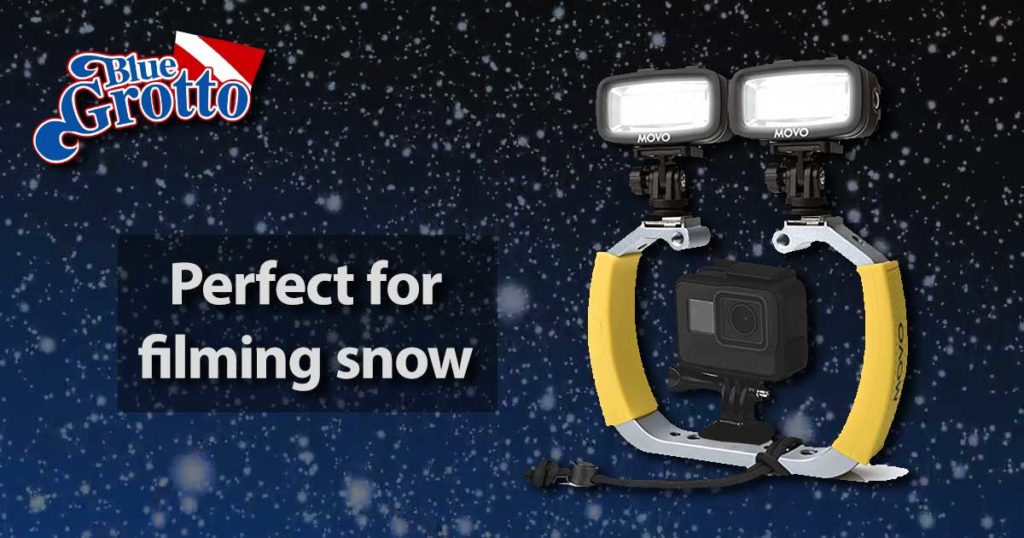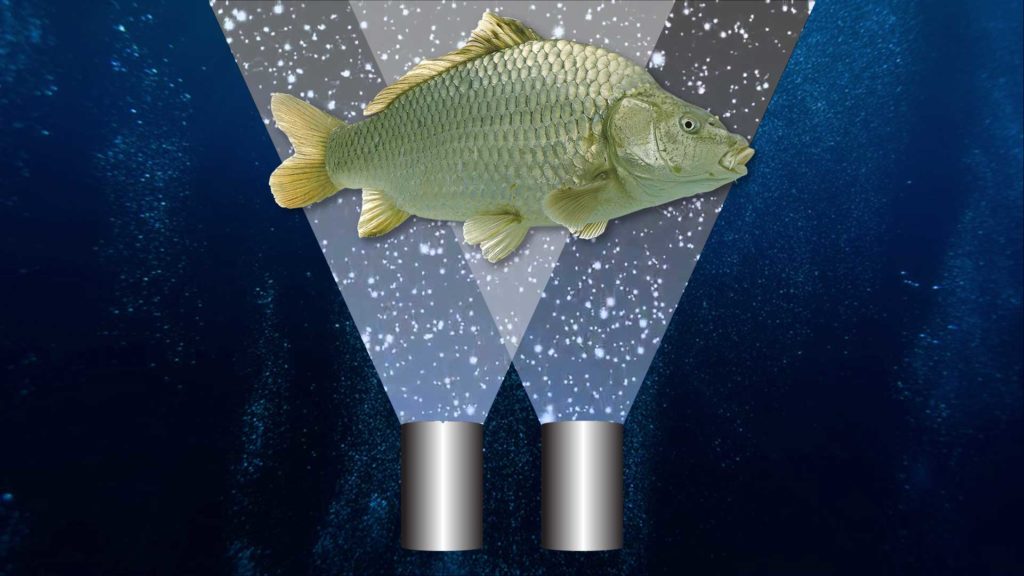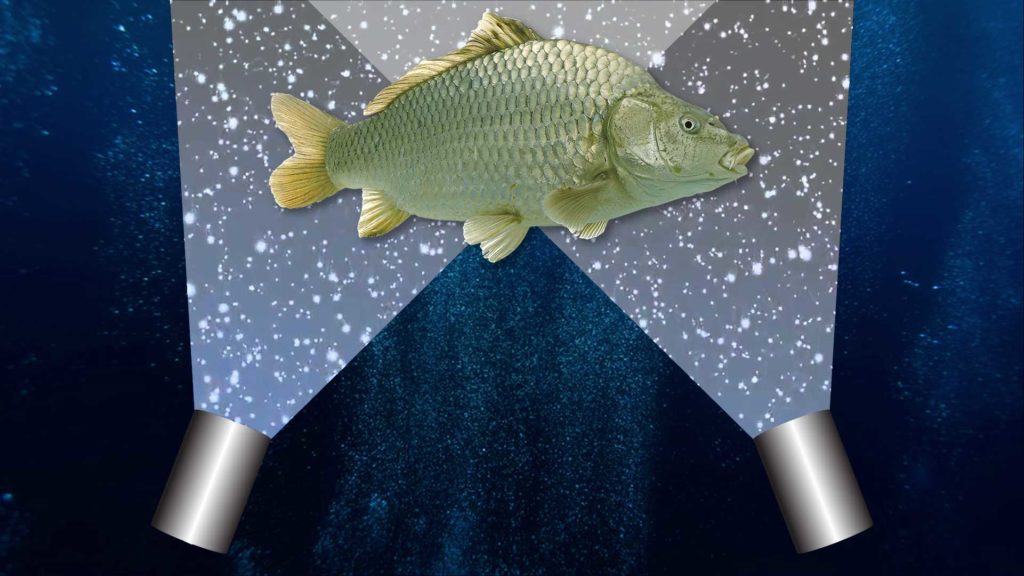If you plan to shoot photos or videos inside the Grotto, you will need an artificial lighting solution. Make sure it’s the right one.
Recently, we watched an instructor explain to another diver why the video lights and tray on which the diver had spent his hard-earned money would not give him the results he was hoping for.
The system, which was like the one shown above, violated a cardinal principle of underwater photos and videos. That is, never put underwater strobes or video lights in line with the camera’s lens. The reason why has to do with something called backscatter.
Backscatter occurs when light hits suspended particles in the water and bounces directly back at the camera. The results are photos and videos that look like they were shot in the middle of a snowstorm.
How do you prevent backscatter? The key is to mount your strobes or lights so that they do not illuminate anything between your subject and the camera lens. Or, if they do, that light is less likely to bounce directly back into the camera. This is what we mean:
Note that the lights are not aimed directly at the subject. Instead, the inner edge of the beams cross directly in front of the subject. No light falls on any suspended particles between the lens and the subject. This is why having a camera tray with arms that can be positioned precisely is essential.
More lessons to be learned
Purchasing the right lighting solution is just one of the painful lessons the diver in our previous example learned. Among them:
- Don’t buy equipment made by anyone other than a well-respected manufacturer of underwater camera gear. The rig you saw at the beginning of this article is made by a company whose expertise is in topside videography. Apparently, they know little about underwear video and may not even dive themselves.
- Underwater strobes are generally more powerful than video lights. However, you can only use them with still cameras and only if there is a way for the camera to trigger the strobe. They won’t work with GoPros or similar systems. On the other hand, video lights will work for both photos and videos. They also allow you to get a better feel for how your images will turn out before you depress the shutter or record button. This makes them the better choice for anyone other than the most serious professionals.
- Amber filters can create the illusion of natural-looking color. But only in the ocean and only at certain depths. For freshwater, you need a special magenta filter. Also, be aware you cannot use color filters with artificial lighting — something our hapless diver from earlier didn’t know. Fortunately, the instructor got him to remove the filter from his GoPro before he went home with bizarrely orange footage.
- Your dive light most likely will not do double-duty as video light. This is due to its narrow beam. Your video lights or strobes must cover an area wider than your camera’s lens covers.
- By the time you invest in something like a GoPro, a camera tray, arms and video lights, you are going to be out close to $1,000 or more. Before doing so, invest a couple of hundred dollars in an underwater photo or video course. The money you spend on training can more than pay for itself if it prevents you from buying the wrong gear. It can also prevent you from spending money on a dive trip from which you return home with mediocre images.
We will have more “how-to” information on photos and videos in further articles. Stay tuned.




